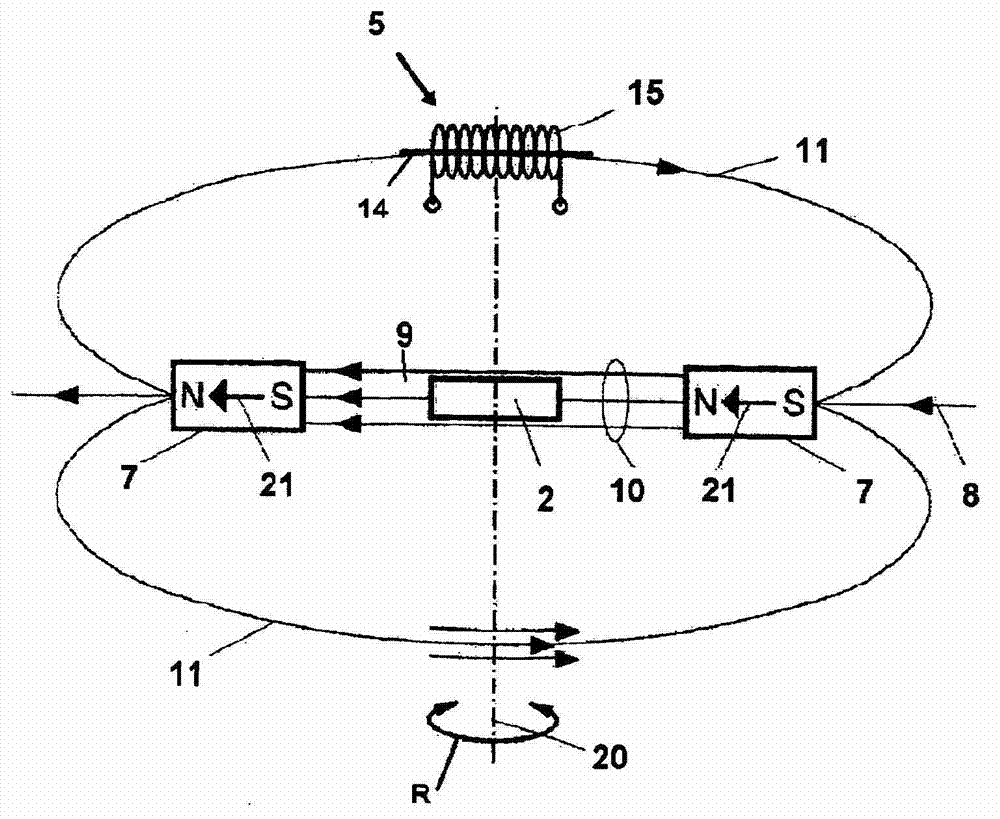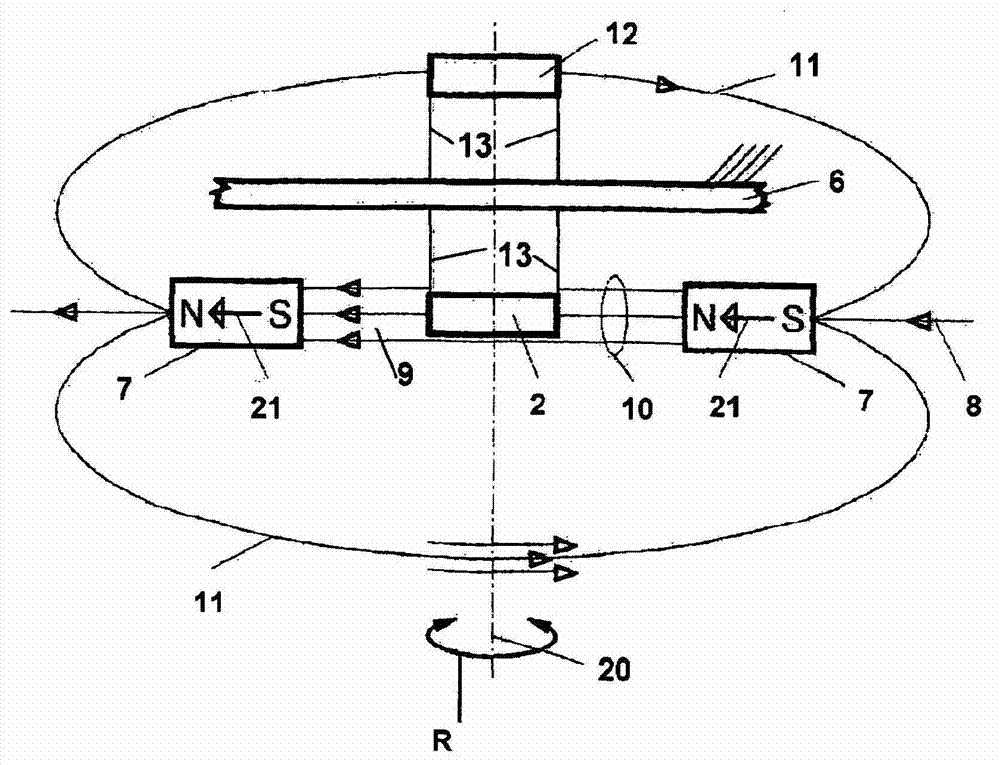Magnetic rotary encoder
A rotary encoder and magnetic technology, applied in the direction of converting sensor output, instruments, measuring devices, etc., can solve the problems of increased noise in weak magnetic fields, non-uniform magnetic fields, not very strong magnetic fields, etc., and achieve high magnetic field strength and good uniformity. Effect
- Summary
- Abstract
- Description
- Claims
- Application Information
AI Technical Summary
Problems solved by technology
Method used
Image
Examples
Embodiment Construction
[0036] It should be emphasized that the drawings are not true to scale. The same elements in the various figures are denoted by the same reference numerals. exist figure 1 The rotary encoder denoted by reference numeral 8 in is an example of the first main variant discussed above, where it can be found in figure 1 as well as Figure 4 , 7 and 8 find an embodiment according to the first sub-variant, while in Figure 5 and 6 An example of the second sub-variant is shown in . Figure 9 and 10 An embodiment according to the second main variant is shown.
[0037] figure 1 Two first permanent magnets 7, 7 are shown whose magnetization vectors 21, 21 are aligned to each other so that they lie on a common straight line extending perpendicularly to the axis of rotation 20 of the rotary encoder 8 on. These two permanent magnets 7, 7 form an integral part of the excitation unit of the rotary encoder according to the invention, which is non-rotatably connected to a body (such as...
PUM
 Login to View More
Login to View More Abstract
Description
Claims
Application Information
 Login to View More
Login to View More - R&D
- Intellectual Property
- Life Sciences
- Materials
- Tech Scout
- Unparalleled Data Quality
- Higher Quality Content
- 60% Fewer Hallucinations
Browse by: Latest US Patents, China's latest patents, Technical Efficacy Thesaurus, Application Domain, Technology Topic, Popular Technical Reports.
© 2025 PatSnap. All rights reserved.Legal|Privacy policy|Modern Slavery Act Transparency Statement|Sitemap|About US| Contact US: help@patsnap.com



